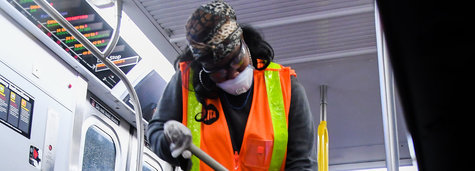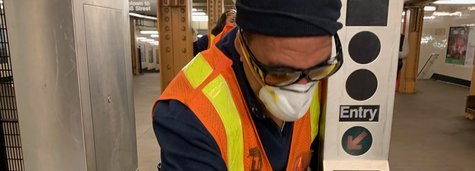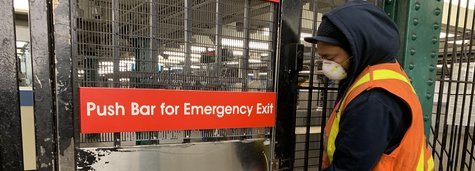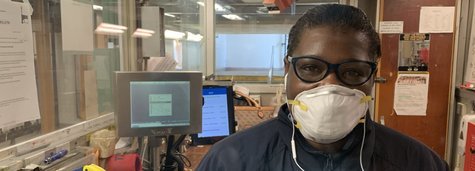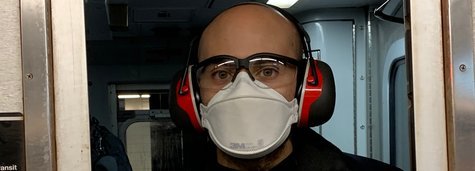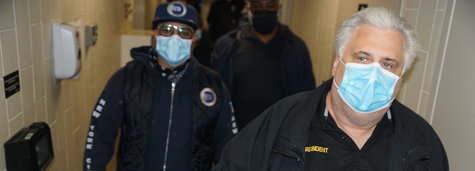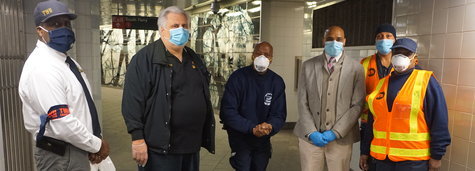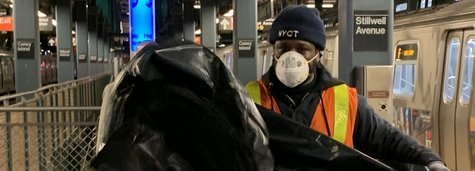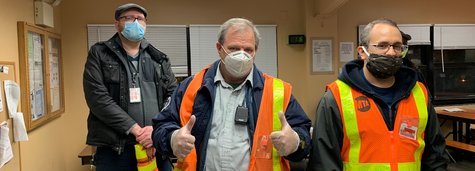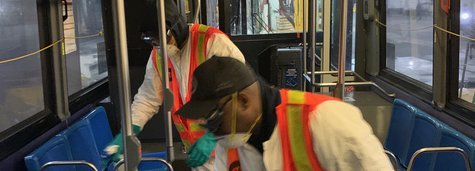Daily News: TWU Presents Ten-Point Plan to Help Fix Subways

MTA Chairman Joe Lhota is offering a myriad of options for straphangers due to problems with the transit system while they work fix issues plaguing the system. (TODD MAISEL/NEW YORK DAILY NEWS)
"The lesson that needs to be learned is that you can do all the long-term investment you want in a capital plan, but you can't forget about day-to-day reliability of the system," said Samuelsen. The MTA remains trapped in a continuous loop of delayed trains, causing commuters everything from inconvenience to threats of losing their jobs. But the subways aren't merely late, they're also overcrowded - so packed that riders can wait for two or three trains to pass before finally squeezing on board.
Twenty-minute commutes can expand into an hour as the 5.7 million daily riders endure another day, another disaster. Frustrated straphangers are fleeing idled cars and risking their lives to walk down a tunnel. A recent video showed hands desperately trying to pry open an F train door after a power outage left trapped riders with no air conditioning.

A morning MTA subway train derailment occurred outside the 125th St. station near St. Nicholas Avenue.(TWU).
A spare 13-foot rail left on the tracks of the A line at 125th St. was struck by a train last month, derailing it and sending the cars plowing into the tunnel wall. There were 34 injuries and hundreds of riders who fled through the dark, grimy tunnel. Fires ignite twice a day on average across on the system's 850 miles of tracks. On Monday, a morning rush hour fire in Harlem knocked out service completely on the B and C lines and stopped the A and D in both directions above 125th St. for about two hours. The blaze, ignited in a 30-foot stream of trash strewn on the railbed, threw thousands of people off schedule and sent nine to hospitals with minor injuries. Amid the chaos of every day commuting, the MTA stands accused of making grandiose plans for the future while grossly disregarding its customers' everyday commuting hell.

Firefighters transported a woman to the hospital after a train derailment at St. Nicholas Avenue and West 135th Street. (ANTHONY DELMUNDO/NEW YORK DAILY NEWS)
The agency at one point blamed riders for holding up trains because they were trying to get on and off them. MTA chief Joe Lhota, who returned last month for his second stint atop the troubled agency, told staff to stop blaming riders and ordered a top-to-bottom review of operations at the $15 billion-a-year behemoth. The MTA did not respond to questions from The News about the TWU plan or requests for comment. Samuelsen said the transit agency has let more time lapse between inspections of critical signals and train cars. The combination of not enough money and signal equipment dating to the FDR White House is stopping riders in the MTA's tracks.
 Mike Carrube, president of the Subway Surface Supervisors Association, in the South Ferry station, August 2, 2014, Manhattan, NY. (Jeff Bachner/for New York Daily News) (JEFF BACHNER FOR NEW YORK DAILY NEWS)
Mike Carrube, president of the Subway Surface Supervisors Association, in the South Ferry station, August 2, 2014, Manhattan, NY. (Jeff Bachner/for New York Daily News) (JEFF BACHNER FOR NEW YORK DAILY NEWS)
The transit union is calling for an extra $50 million a year so the MTA can conduct more inspections and add 350 signal and car inspectors. Samuelsen said he also believes the city should kick more money into transit operations. The city has rebuffed requests for more money after pledging $2.5 billion toward repairs, calling the MTA a state responsibility. To balance the new spending, the TWU needs to be flexible on work rules, such as staffing trains with only one worker and training station agents to handle emergencies on the tracks, said Rich Barone, vice president for transportation at the nonprofit Regional Plan Association.
"There needs to also be some efficiencies and givebacks to allow the MTA to do some of the things that they're suggesting," Barone said. "The MTA cannot just keep adding more full-time staff." When asked about one-person train crews, track worker Samuelsen said riders at last month's A train derailment could have died on the tracks without a conductor and an engineer on board.
"It would be incredibly dangerous to do in New York City," he said. "You had passengers off of that train that derailed and walking around on the subway track.
Michael Sciaraffo, center, who was one of hundreds aboard a New York City subway train that lost power for nearly an hour earlier this month, speaks during a rush hour rally. (KATHY WILLENS/AP)
"If there weren't two people on that train to evacuate the train to get people to safety, you may very well have dead New York City transit riders lying fried on the railway tracks."
Samuelsen is looking back, specifically to the 1990s, to look ahead. Back then, signals - which tell subway trains how to proceed in tunnels - were inspected and maintained every 30 days. The MTA has since moved to 90-day cycles for the critical devices. To Samuelsen, that's a mistake.
"The signal system's old," he said. "You can't wait until the signal system's rebuilt. You've got to roll the maintenance cycles back.
Problems with signals have been plaguing daily service and forcing riders to spend more of their day stuck in crowded trains or stations. "It's very prudent to try to ratchet that up and get ahead of it," said Barone, from the Regional Plan Association. "It's being proactive more than reactive." Keeping spare trains tucked away in spur tracks is another decades-old practice the TWU wants to revive.
In the 1990s, empty trains would be ready to head toward a crowded platform whenever needed. The option would have come in handy during the recent Harlem track fire, when riders packed themselves into tiny No. 1 train stations that could barely fit them, Samuelsen said. But a tight supply of train cars put an end to stashing spares.
Union president Mike Carrube of the Subway Surface Supervisors Association said extra trains stored along the tracks would have been helpful 10 years ago when he started as a subway dispatcher.
"I can't tell you how many times that I wish I had a ready-to-go train," Carrube said. "I think they need to start to look at some of the old stuff that they used to do now because the ridership is up." Subway cars also need more attention from the MTA. The time between inspections and overhauls grew when the MTA faced a budget crisis and drastically cut costs and service in 2010. Since those cuts, the time between inspections grew to every 75 days or 12,000 miles, from 66 days or 10,000 miles. Complete overhauls - where crews replace major parts like brakes and gears - were stretched out, too. Instead of a car getting a full rehab every six years, the MTA extended it to every seven years. The number of mechanics is so tight that cars are now sent into service minor defects, like a stuck door or loose window, according to TWU officials.
The cars also break down once every 115,527 miles on average - well below the MTA's goal for its fleet. "The single best way to stop rolling-stock breakdowns, which is right up there with signal failure as the reason for the reliability issues that we're having, is inspection," Samuelsen said. A former senior transit official told The News the great recession walloped the MTA's finances. But now, the city's economy has improved, along with the MTA's finances. "There was a large focus on trying to reduce costs," said the official, who spoke on condition of anonymity. "You need to re-examine - were some of those cuts too far? - as money comes back into the system."


